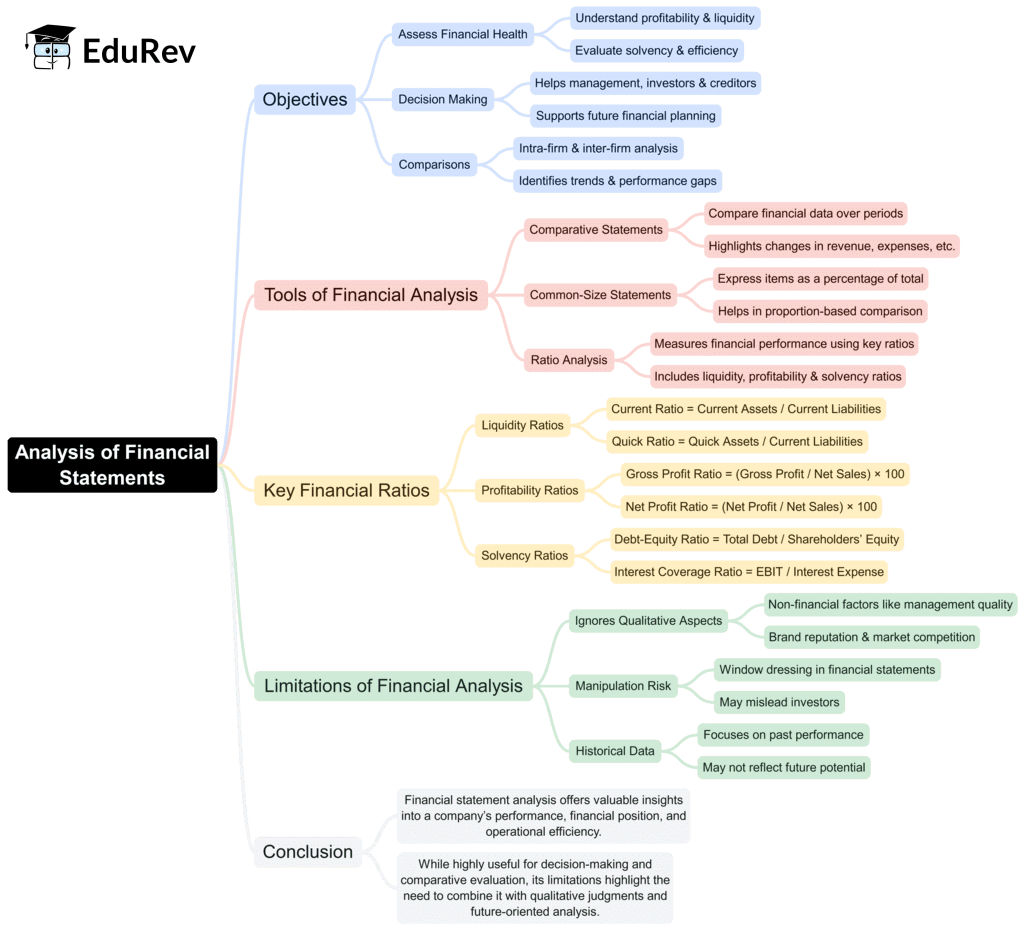Commerce Exam > Commerce Notes > Accountancy Class 12 > Mind Map: Analysis of Financial Statements
Mind Map: Analysis of Financial Statements | Accountancy Class 12 - Commerce PDF Download

The document Mind Map: Analysis of Financial Statements | Accountancy Class 12 - Commerce is a part of the Commerce Course Accountancy Class 12.
All you need of Commerce at this link: Commerce
|
42 videos|199 docs|43 tests
|
FAQs on Mind Map: Analysis of Financial Statements - Accountancy Class 12 - Commerce
| 1. What are the key financial statements that businesses typically prepare? |  |
Ans. The key financial statements that businesses typically prepare include the balance sheet, income statement (or profit and loss statement), and cash flow statement. The balance sheet provides a snapshot of the company's assets, liabilities, and equity at a specific point in time. The income statement shows the company's revenues, expenses, and profits over a period. The cash flow statement outlines the cash inflows and outflows from operating, investing, and financing activities.
| 2. How can financial statements be analyzed for better decision-making? |  |
Ans. Financial statements can be analyzed using various techniques such as ratio analysis, trend analysis, and comparative analysis. Ratio analysis involves calculating financial ratios such as liquidity ratios, profitability ratios, and leverage ratios to assess the company's performance and financial health. Trend analysis examines financial data over multiple periods to identify patterns or trends, while comparative analysis involves comparing financial statements with those of other companies in the same industry to benchmark performance.
| 3. What is the importance of understanding financial ratios? |  |
Ans. Understanding financial ratios is crucial as they provide valuable insights into a company's financial performance and operational efficiency. Ratios such as the current ratio, return on equity, and debt-to-equity ratio help stakeholders assess liquidity, profitability, and leverage. This understanding aids investors, management, and creditors in making informed decisions regarding investments, creditworthiness, and operational improvements.
| 4. What are some common mistakes to avoid when analyzing financial statements? |  |
Ans. Common mistakes to avoid when analyzing financial statements include ignoring the context of the numbers, failing to consider industry benchmarks, and relying solely on one financial statement. It's important to interpret financial data within the broader economic and industry context. Additionally, using multiple sources of information, including ratios and trends across various statements, provides a more comprehensive view of financial health.
| 5. How often should financial statements be reviewed for effective management? |  |
Ans. Financial statements should ideally be reviewed on a regular basis, such as quarterly or monthly, for effective management. Regular reviews allow management to track performance, identify issues early, and make timely decisions. Additionally, annual reviews are essential for long-term strategic planning and assessment of overall business health, but frequent analysis helps in adapting to changing market conditions promptly.
Related Searches




















